What Is SaaS Sprawl and How To Control It
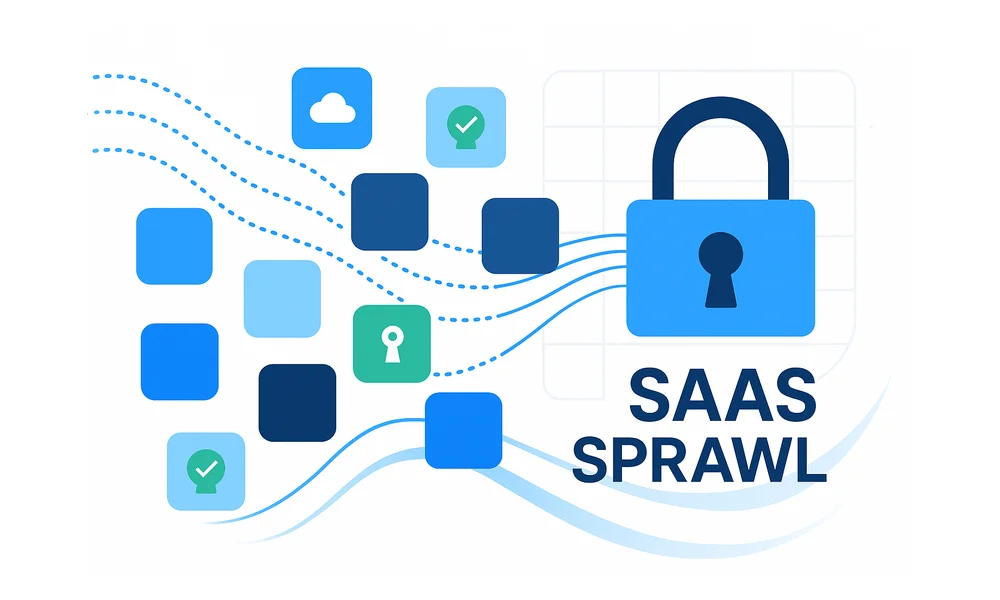
SaaS used to simplify work; now it quietly multiplies out of sight. Teams sign up for a niche calendar tool, finance adopts a new expense app, and the stack balloons before anyone notices.
That silent build-up, often called SaaS sprawl, erodes security posture, upends compliance efforts, and drains budget dollars through duplicated licenses and forgotten renewals. Without clear ownership, easy purchasing lets each business unit spin up its own tech island, while remote hiring and rapid acquisitions pour gasoline on the fire. Most mid-size enterprises now juggle hundreds of cloud apps, with IT unaware of a third of them, so the issue is no longer whether sprawl exists but how quickly it empties the wallet.
This guide unpacks ways to spot the mess, assign accountability, and bring order through governance and SaaS management platforms.
Table of Contents
- How SaaS Sprawl Sneaks In
- The Real-World Risks of Sprawl
- Build Clear Owners and Accountability
- Use an SMP for Full Visibility
- Put Policies and Guardrails in Place
- Keep Optimizing and Nurture the Culture
- Conclusion
- Audit your company's SaaS usage today
How SaaS Sprawl Sneaks In
SaaS sprawl happens when cloud apps multiply across a single company before anyone plans a cohesive stack. Without guardrails, teams select tools on their own, and the catalog balloons before anyone notices. Soon, no one person can map the maze.
Most of the problem starts with whoever owns the buy button. Department managers hold their own budgets, swipe a card, and spin up a trial in minutes. Procurement and IT rarely keep pace when an app promises quick collaboration or fancy dashboards.
Remote and hybrid work accelerated the trend because scattered teams need immediate fixes for every workflow gap.
Mergers and acquisitions add another surge as each new team drags its preferred stack into the company.
Early warning signs are easy to spot if you look:
- Multiple project boards, chat channels, and storage drives that all solve the same problem but split the data.
- User directories packed with three or four corporate logins for the same employee.
- Finance receives dozens of small invoices from vendors no one in IT recognizes.
- Shadow admin tokens and OAuth grants piling up in security dashboards with no ticket that explains why.
Recent surveys make the scale of the issue painfully clear. Mid-market companies now juggle about 200 to 400 SaaS apps, and analysts estimate 30 to 40 percent live outside IT’s view. That hidden slice alone can absorb months of engineering time just to list, much less secure or retire, which is why catching sprawl early matters.

The Real-World Risks of Sprawl
Unchecked SaaS sprawl quietly piles up risks that show up in board packets. Every time a team swipes a credit card, your attack surface, compliance load, and subscription costs climb together. You end up paying for the same risk three times over.
Security rings the loudest alarm, because stray OAuth tokens never retire on their own. In 2022, attackers hit GitHub by hijacking legacy tokens tied to Heroku and Travis CI. The tokens let them read private code at dozens of companies, a gap that existed only because no one tracked the extra apps. Multiply that by hundreds of forgotten connectors and the odds tilt toward compromise.
Regulators follow the data, and sprawl scatters sensitive records into tools your auditors have never seen. When a sales rep uploads a European prospect list into an unvetted quiz app, the company is suddenly exporting personal data without a GDPR Article 28 agreement, opening the door to fines of up to four percent of global revenue.
Budget leakage feels quieter, yet finance notices when tool overlap pushes the cloud line item off the chart. Paying for both Asana and Trello across separate teams, for example, can double project-management spend while half of the seats sit idle. Auto-renewal clauses then lock you into another twelve months before anyone can intervene.
Beyond the hard dollars, hidden friction chips away at output every day.
- IT support keeps resetting passwords for nine chat apps.
- Analysts spend hours stitching reports from data silos that refuse to line up.
- Employees lose minutes just deciding which whiteboard tool to open.
These soft costs rarely live on a balance sheet, yet they drain velocity all the same.

Build Clear Owners and Accountability
SaaS order seldom shows up on its own inside a growing company. Assign one clear owner, often the CIO or senior business-systems lead, and publish that choice so every department knows whom to call. When staff see a real person attached to each app, surprise invoices drop fast because the “just swipe the card” tools now carry a name tied to risk and cost.
Even the most diligent owner needs backup to keep SaaS orderly. Form a lean governance board with security, finance, and procurement standing shoulder to shoulder with two business-unit reps who feel the daily pain of tool choice. The group meets monthly, never longer than an hour, and works from a living RACI grid that shows, for each app in play:
- Who requests it
- Who approves risk and spend
- Who implements and trains users
- Who reviews health every quarter
A RACI table is pulled from the shared drive before every meeting, updated in real time, and re-posted before anyone leaves the room. Simple version control keeps politics out because the facts sit in a visible spreadsheet, not buried in chat threads.
Central control only sticks when data lands in one place. Build a “SaaS control hub” that syncs invoices from ERP, seat counts from SSO logs, and renewal dates from contract files, then grant the board edit rights while locking formulas. With budget, risk, and license metrics side by side, finance can spot a twelve-percent variance before it hits the P&L, and security can flag apps missing MFA without waiting for audit season.
Quarterly portfolio reviews give the process a natural finish line. The owner circulates a two-page dashboard that stacks each application against targets for seat use, vendor risk score, and spend per active user. Executives see red, yellow, or green and feel it in their bonus plan because the board ties five percent of the bonus pool to trimming unused seats and retiring low-value tools. Once that money moves, discipline around SaaS ownership stops being a policy and starts to feel like habit.
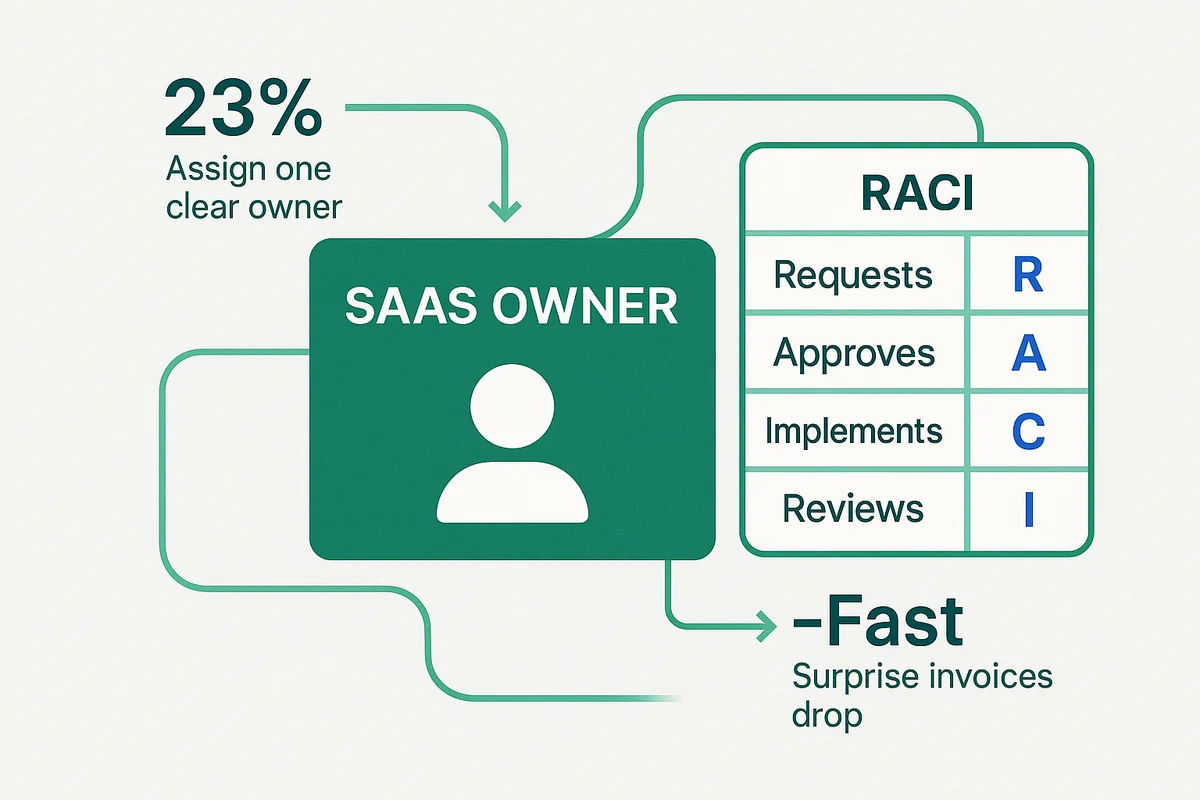
Use an SMP for Full Visibility
Most teams can’t fix what they can’t see across SaaS. A SaaS Management Platform (SMP) connects to SSO logs, finance feeds, and a small browser plug-in within hours, then scans every credential, invoice line, and API call. Because the scan never stops, a tool added on Tuesday afternoon is recorded long before security or finance spots the charge.
With the captured data, the platform builds live dashboards that rank apps by user count, OAuth scope, spend trend, and last login. Its algorithms flag dormant licenses, spot category overlap like chat or whiteboarding, and produce a risk score rooted in MFA adoption and admin counts, so leaders stop digging through spreadsheets when auditors show up. The whole set rolls up into a single health score that refreshes nightly.
Ignore the slick interface you see when you size up vendors. Dig into how many direct API connections they keep current, whether they host data in your region, and how much automation you can set up without writing code. Get proof that their discovery engine finds charges on reimbursed employee cards as well as purchase orders.
Quick wins prove the tool’s worth and earn political capital for bigger consolidation pushes.
- Auto-revoke access after 30 inactive days and recycle the license if someone asks for it later
- Send 90-day renewal reminders to Slack and tag the contract owner
- Merge duplicate company domains so scattered Jira workspaces land on one invoice
- List applications bypassing single sign-on and open a tracked ticket for the owner
These low-effort flows often recoup five figures before the next board meeting.
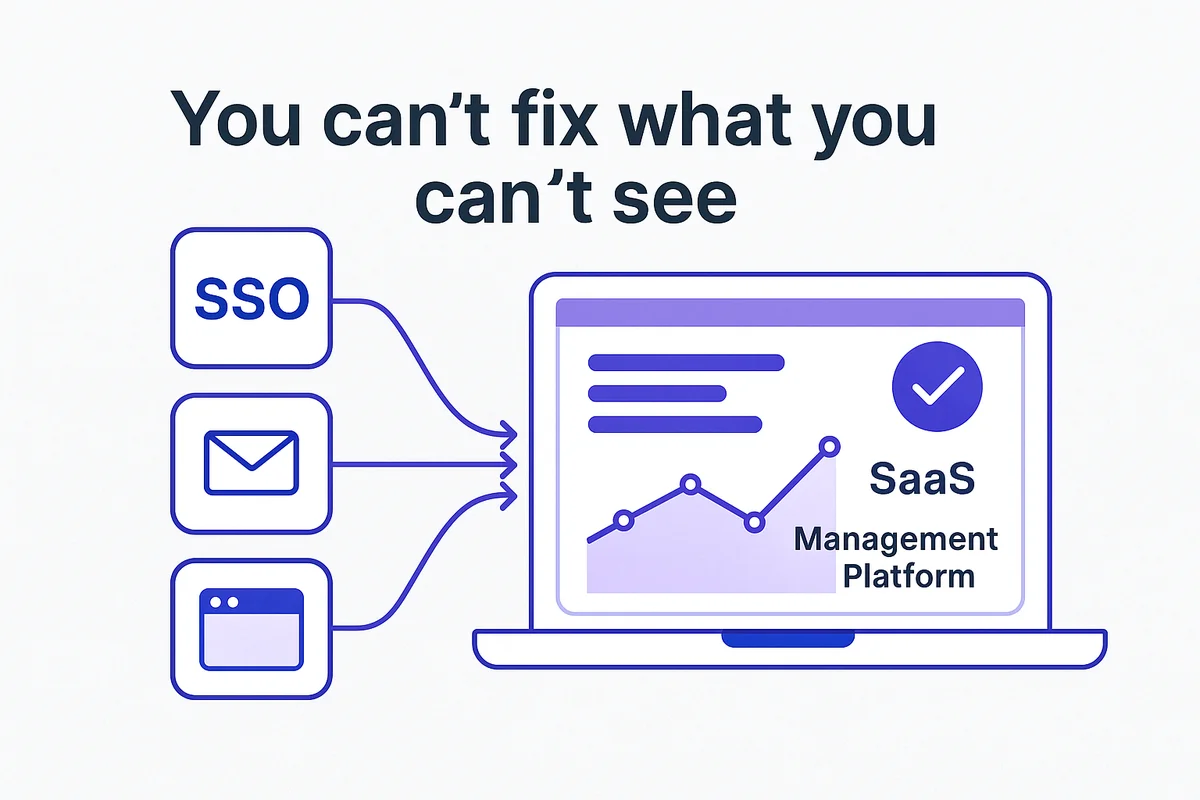
Put Policies and Guardrails in Place
Spotting every SaaS subscription means little if people can still pull out a card for the next shiny tool. Written policies turn discovery reports into clear limits teams can follow. Without that structure, the sprawl you just mapped creeps back within months and drains budgets again. Rules tied to real risk and spending thresholds stop the bloat without shutting down innovation.
To get traction, many companies roll out a lightweight playbook that covers:
- Simple intake form in the help desk that asks for business goal, data type, and user count.
- Risk tiers that tie security review depth to sensitivity so low risk apps glide through quickly.
- Spend thresholds where any contract above $5,000 per year needs finance and security sign off.
- Shared vendor catalog showing approved, conditionally approved, and blocked tools along with quick-start training links.
- Renewal notice rule that suppliers must email a 60-day heads up before auto-renew or price hikes.
Procurement bakes those guardrails into every contract so renewal season holds no surprises. Template clauses cover data residency, audit rights, breach notifications, and the right to export or delete data within 30 days of termination, cutting costly renegotiation later. All renewals feed a master calendar that triggers alerts 90, 60, and 30 days before any automatic charge hits the corporate card.
Policies hidden in a dusty wiki rarely change daily behavior. Embed the intake form inside the SaaS request channel in Slack, surface the approved catalog in Okta’s dashboard, and push budget flags right inside Coupa so users meet guardrails in their normal flow.
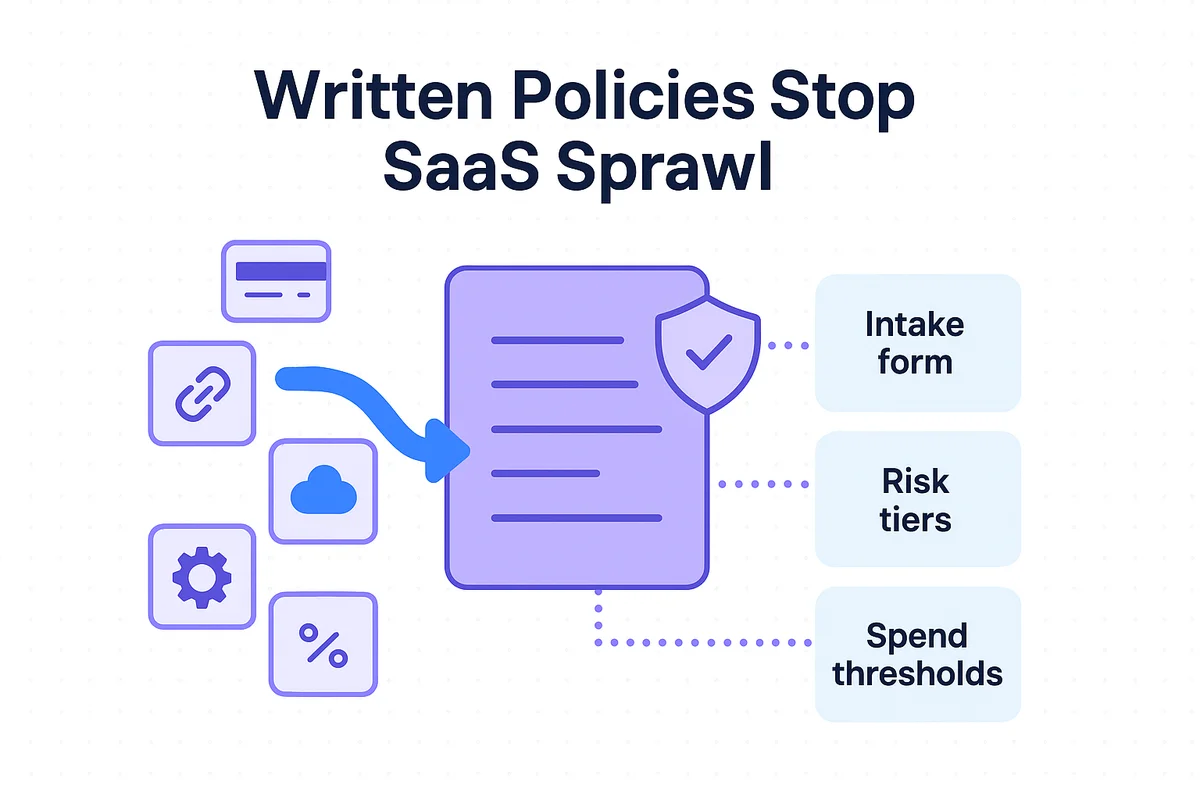
Keep Optimizing and Nurture the Culture
Daily SaaS oversight clicks when teams watch the numbers move in real time. A live dashboard showing license counts, sign-ins, and risk scores turns abstract policy into a scoreboard people follow. Block 30 minutes each month for a joint finance-and-security review so cost and risk land on the same table.
After the meeting, spotlight metrics the business already tracks to keep eyes on the board. Front-and-center numbers include:
- Active seats versus paid seats per product
- Cost per active user, trended quarter over quarter
- Last login age of privileged accounts
- Open audit findings tied to a specific owner
When the product owner spots her name beside 42 dormant licenses, curiosity beats blame and cleanup happens quickly.
Culture shifts faster when users sense progress instead of policing. Short video modules on how the company buys software, tucked into the learning portal, beat dense slide decks. Add a leaderboard that credits teams for smart moves such as cleaning orphaned accounts, rejecting duplicate tools, and meeting MFA targets, and post the standings in Slack every Friday. The free, gamified shout-out keeps momentum alive long after launch.
Treat the first year like a product launch: discover, stabilize, refine, then mature. Quarter one focuses on finding every app and shutting off obvious waste. Quarter two tackles high-risk apps and locks renewal dates into a shared calendar. Quarter three rolls out the intake policy and puts the playbook in new-hire onboarding. By quarter four, each application carries a value, spend, and risk score so executives can prune with confidence. This cycle grows stronger every 90 days.
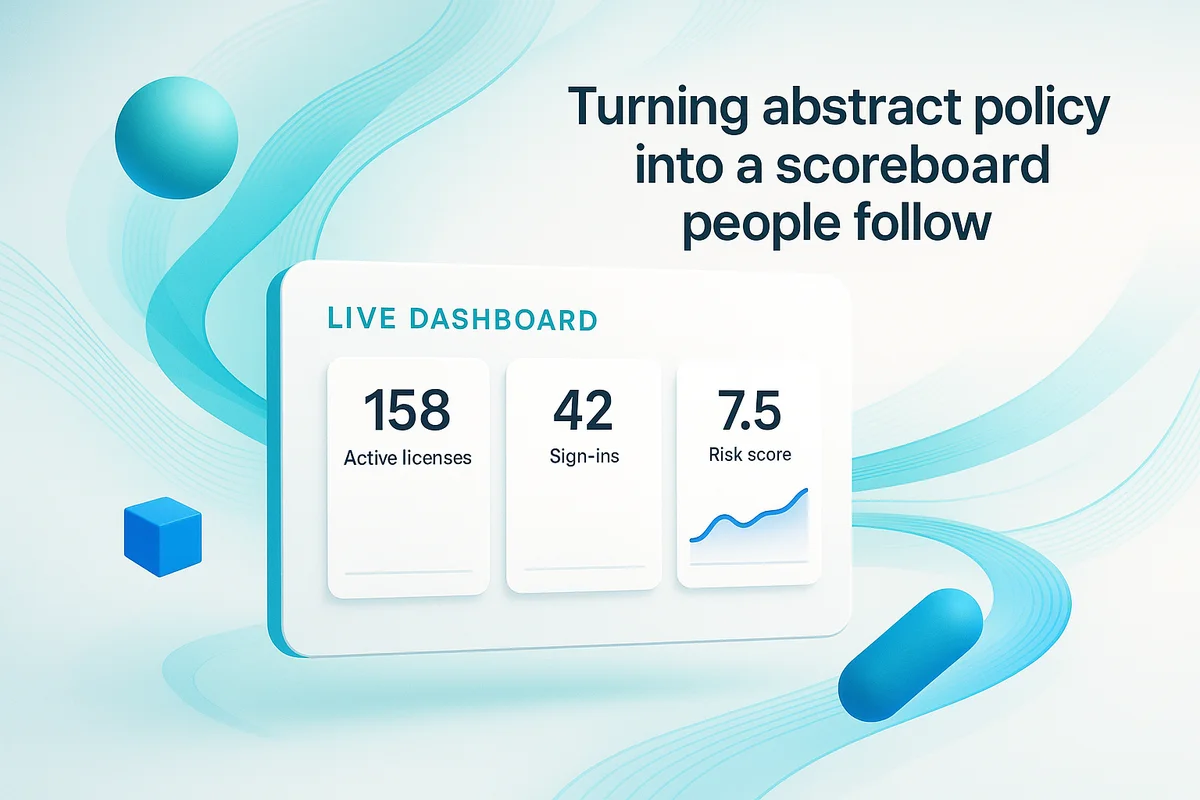
Conclusion
SaaS sprawl drains resources faster than most leaders anticipate today. A flood of apps creeps in through swipe-card purchases, remote teams, and post-merger chaos, leaving IT blind and budgets bleeding. The fallout follows: security gaps, compliance risk, wasted seats, and frustration in every department. The remedy is straightforward, assign owners, deploy an SMP, lock in guardrails, and keep refining.
With clear governance and the right platform, organizations tame SaaS sprawl, close risk gaps, and put real money back into the mission.
<div class="post-img">
<img src="https://ng-www.toriihq.com/articles/assets/images/articles/saas-sprawl-control_7.webp"
alt="Illustration depicting SaaS sprawl challenges, highlighting risks like security gaps and the need for governance solutions."
class=" "
style="border-radius: 10px; max-width: 80%"
loading="lazy">
</div>
<figcaption></figcaption>
</figure>
Audit your company’s SaaS usage today
If you’re interested in learning more about SaaS Management, let us know. Torii’s SaaS Management Platform can help you:
- Find hidden apps: Use AI to scan your entire company for unauthorized apps. Happens in real-time and is constantly running in the background.
- Cut costs: Save money by removing unused licenses and duplicate tools.
- Implement IT automation: Automate your IT tasks to save time and reduce errors - like offboarding and onboarding automation.
- Get contract renewal alerts: Ensure you don’t miss important contract renewals.
Torii is the industry’s first all-in-one SaaS Management Platform, providing a single source of truth across Finance, IT, and Security.
You can learn more about Torii here.
Frequently Asked Questions
SaaS sprawl occurs when multiple cloud applications proliferate within an organization without cohesive planning, leading to security risks, compliance issues, and budget inefficiencies.
Unchecked SaaS sprawl increases the attack surface for security breaches, complicates compliance, and leads to budget wastage due to overlapping tools and unnoticed renewals.
Organizations can detect SaaS sprawl by monitoring user directories, evaluating multiple vendor invoices, and identifying overlapping applications that tackle the same problem.
A SaaS Management Platform provides visibility into all applications, tracks usage trends, identifies unused licenses, and facilitates efficient cost management for cloud services.
Companies should designate a clear owner for SaaS applications and form a governance board that includes representatives from security, finance, and business units to oversee usage.
Strategies to limit SaaS sprawl include implementing policies for app requests, setting spending thresholds, and utilizing a shared vendor catalog to manage approved tools.
To optimize SaaS management, companies should continuously monitor usage, facilitate finance and security reviews, and foster a culture of awareness around applications and their costs.

